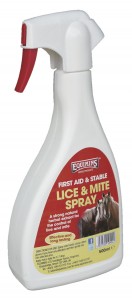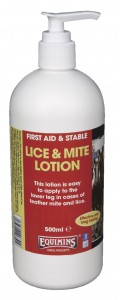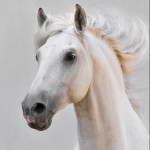Lice, mites and ringworm
Lice, mites, ringworm- all of these strike fear into the heart of any horse owner…and it’s easy to see why. In this blog, we’re exploring what lice, mites and ringworm are and what we can do about them.
 Let’s start with lice. These little devils might be small (from 2mm), but they can cause itching to the point where the hair and skin can become damaged. They can gather in specific areas or cover the whole body- in both cases, action is required. You might be able to see lice on the horse’s coat, and you might be able to see their white eggs too.
Let’s start with lice. These little devils might be small (from 2mm), but they can cause itching to the point where the hair and skin can become damaged. They can gather in specific areas or cover the whole body- in both cases, action is required. You might be able to see lice on the horse’s coat, and you might be able to see their white eggs too.
Lice are more common in the winter months…and there’s more than one type that could decide to call your horse ‘home’. They can spread from horse to horse by touch or through sharing rugs, grooming kit, equipment and even sharing a rider!
Mites are more commonly seen on horses with feathering around the bottom of the leg, in wet and cold weather, but some species move to other places too. Although they are small, they can cause irritation and, much like lice, can cause itching to the point that the skin becomes damaged. If your horse starts stamping his feet, chewing on his legs or rubbing himself against solid objects, he could well have mites. One of the additional concerns with mites is secondary infection in wounds caused by the scratching. As with lice, mites can spread from horse to horse, so careful management is key.
Ringworm, contrary to its name, isn’t actually a worm, it’s a fungus. It presents itself as a raised area of hair with a slight swelling underneath, then a hairless area that can become scaly, scabby and itchy. That said, it can produce different symptoms such as soreness and irritation, so always keep an eye out when you’re grooming your horse for anything that’s not ‘normal’. It’s highly contagious, not just between horses, but it can be spread to humans too. This fungus is designed to survive. It can be passed from one horse to another through rugs, grooming kits and equipment…even through fencing and wood in stables…and it can survive for years.
In all these situations, prompt action is required to ease the horse’s discomfort and to also help prevent the condition spreading. Initially, it’s important to get a diagnosis, so a call to your vet is in order. After he’s examined your horse, you’ll know what condition you’re treating and what action to take.
To prevent one horse spreading his condition to others, separate him immediately, don’t share tack, grooming kits, rugs or buckets and make sure everyone who comes into contact with that horse is aware of the issue. Equally, ensure that his equipment is moved away from others in the tack, groom and rug area, ready to be washed and treated.
Of course, the treatment for mites and lice is different to ringworm. As ringworm is a fungal infection, an anti-fungal wash or spray (such as Microlat Stable Disinfectant or Tea Tree Mist) could be advised. Microlat can be used on the skin (when diluted correctly), but can also be used on stables and flooring.
 As for lice and mites, we have two products created with these pests in mind. Our Lice & Mite Spray is made using a strong herbal extract and is free from harmful chemicals. It should be rubbed into infected areas twice a day for seven days. The Lice & Mite Lotion is a different formulation to the spray and can be rubbed into feathers and any other area twice a day for seven days.
As for lice and mites, we have two products created with these pests in mind. Our Lice & Mite Spray is made using a strong herbal extract and is free from harmful chemicals. It should be rubbed into infected areas twice a day for seven days. The Lice & Mite Lotion is a different formulation to the spray and can be rubbed into feathers and any other area twice a day for seven days.
To find out more about our products, see the website or contact us.

 Equimins specialises in producing natural horse supplies, products and supplements for the major areas associated with caring for a horse. All products are proudly made in the UK and excellent specification quality products are of paramount importance. Using this blog we want to share some of the knowledge we have gained through nearly 30 years of experience.
Equimins specialises in producing natural horse supplies, products and supplements for the major areas associated with caring for a horse. All products are proudly made in the UK and excellent specification quality products are of paramount importance. Using this blog we want to share some of the knowledge we have gained through nearly 30 years of experience. 


